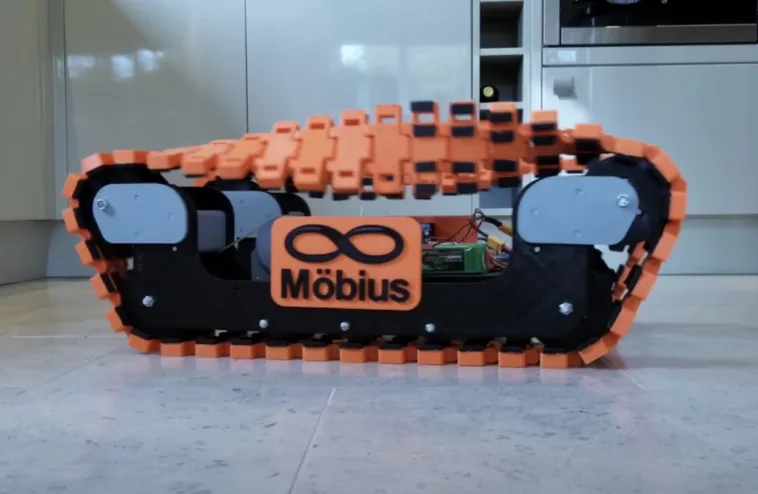
Möbius strips are often used to symbolize infinity, because they are continuous loops with only a single surface. They can’t exist in real life, because every solid object in reality has thickness — even if it is very thin, like a piece of paper. But we can construct similar objects that loop and twist over on themselves. James Bruton demonstrated that concept by building an RC tank with Möbius strip tracks.
This project doesn’t seem to have any real purpose beyond curiosity. Bruton wanted to see how Möbius strip tracks would work and so he constructed this tank to find out. The treads and most of the rest of the tank were 3D-printed, with the tread links getting a special design that lets them pivot relative to each other. They pivot just enough that the each track was able to make a half-twist over the course of 8 or 9 links. That half-twist is what makes the tracks similar to a Möbiusstrip, because the “outer” surface continues endlessly and transitions to being the “inner” surface and then repeats forever.

As is the case for many of Bruton’s creations, this tank has an Arduino Mega 2560 for control. It receives commands from Bruton’s universal remote through an OrangeRX DSM2 radio receiver. A DC gear motor drives each track, providing plenty of torque.
In testing, this tank performed similarly to a standard RC tank—though there is, presumably, more friction to overcome. When the tracks are bare plastic, they slip on hard surfaces a lot. When Bruton added grippy pads, they didn’t slip quite enough. But interestingly, the unique geometry of the tracks means that one “side” can be grippy and the other slick. The track will then alternate between the two, even though that doesn’t seem to provide any real benefit.
The post This RC tank has Möbius strip tracks appeared first on Arduino Blog.
Website: LINK


